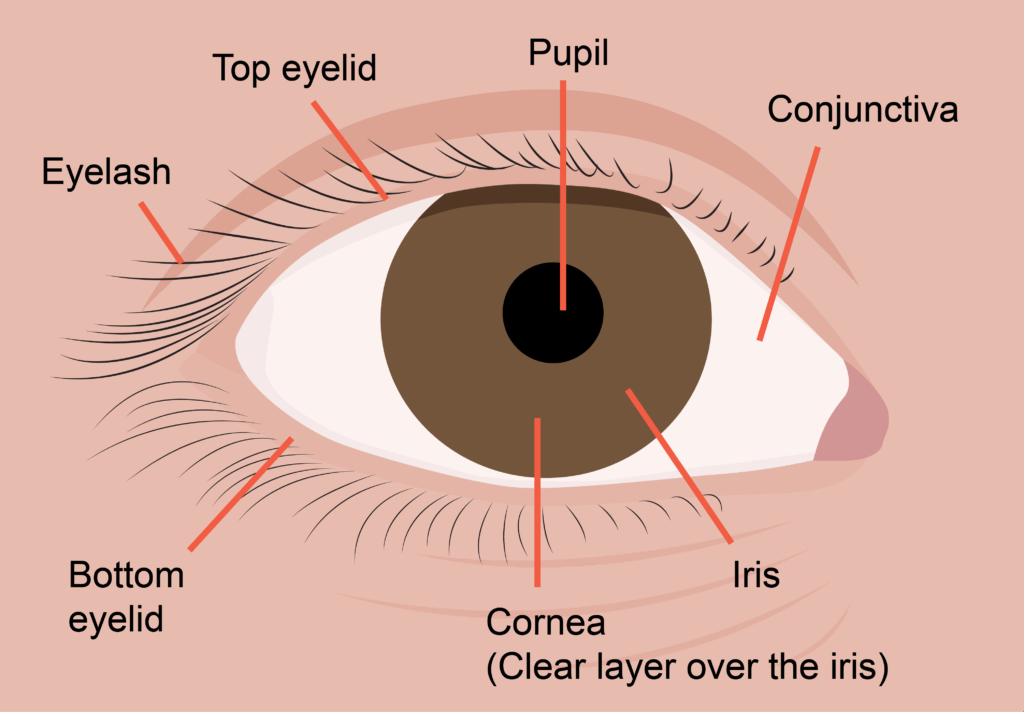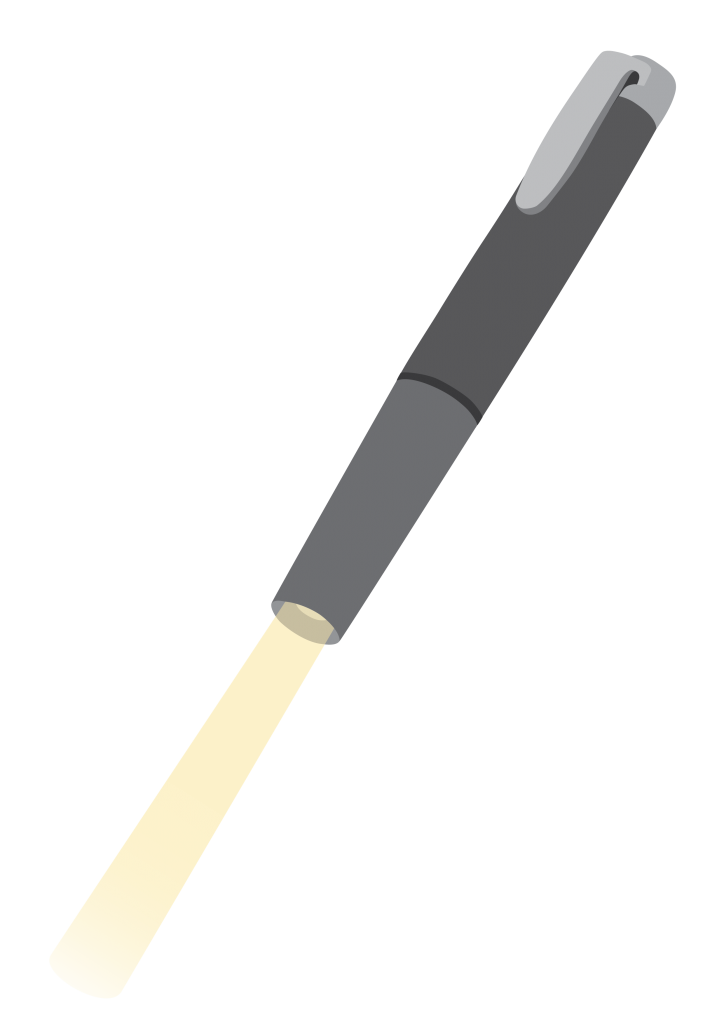How to test pupil reactions and eye movements
Instruction
In this topic you will learn how to test pupil reactions and eye movements in people who have had a knock to their eye.
Testing pupil reactions and eye movements
It is important to test a person’s pupil reactions and eye movements when:
- They have had a knock or cut to their eye, and
- The skin and eyeball are not damaged, and
- They passed the distance vision screen.
- These tests check whether the injury has damaged the person’s eyes.
Tip
Guide five: Eye injuries tells you when you should test a person’s pupil reactions and eye movements.
Pupil reactions
The pupil is the dark part in the centre of the eye. It is where light passes into the eye.
When light shines into the eye, the pupils should get smaller.
When there is very little light shining into the eye, the pupils should get bigger.

How to test pupil reactions
Prepare
You will need:
- A small torch or pen light
- A dark space or room.

Explain
Make sure the person is comfortable. Explain that you will shine light into their eyes to test their eye reactions.
Test pupil reactions
- Dim the room lights
- Ask the person to look at an object in the distance, such as the far wall
- Look at the size and shape of both pupils – they should be the same
- Shine a small torch into the right eye from about 10 centimetres away
- Watch to see if both pupils quickly get smaller
- Move the light away and watch to see if both pupils get bigger
- Repeat steps 4-6 for the left eye
- Finally, quickly move the light between the right and left eyes 2-3 times. Watch to see if both pupils stay small.
Result
Pass:
- Both pupils should be equal in size
- They should both quickly get smaller when the light shines into them
- They should both get bigger when the light is removed
- They should both stay small when the light is moved quickly between each eye.
Did not pass:
- There is a difference in size between left and right pupil
- The pupils get bigger or smaller very slowly.
Instruction
Watch the video to learn how to test a person’s pupil reactions.
If a person did not pass the pupil reaction test refer to an eye health professional urgently.
Record
Record the result in the Action taken section of the PEC Screen form.
Activity
In pairs practice completing the pupil reaction test on each other.
How to test eye movements
Prepare
You will need a well-lit space to carry out the test.
Explain
Make sure the person is comfortable. Explain that you will ask the person to follow your finger or pen with their eyes to test their eye movements.
Test eye movements
- Ask the person to keep their head still and follow your finger or pen with their eyes only
- Move your finger or pen in an H-shaped pattern from left to right horizontally:
- Up and down on the left side
- Left to right horizontally again
- Up and down on the right side
- Watch for smoothness and amount of eye movements in all directions
- Check for any limitations or slowness in movement.
Result
Pass:
Both eyes easily follow your pen or finger
There are no limitations in the person’s eye movements.
Did not pass:
There is limited eye movement in one or both eyes
There is a difference in movement between the left and right eye
The person’s eye movements are very slow.
Instruction
Watch the video to learn how to test a person’s eye movements.
If a person did not pass the eye movement test, refer to an eye health professional urgently.
Record
Record the results in the Action taken section of the PEC Screen form.
Activity
In pairs practice completing the eye movement test on each other.

